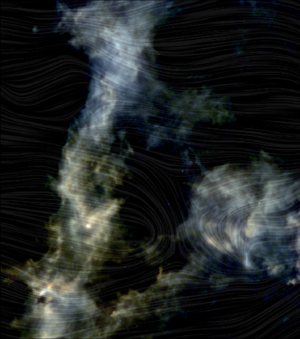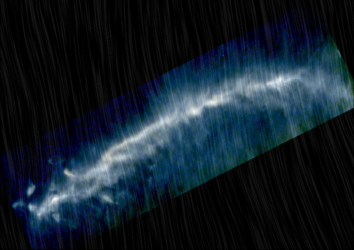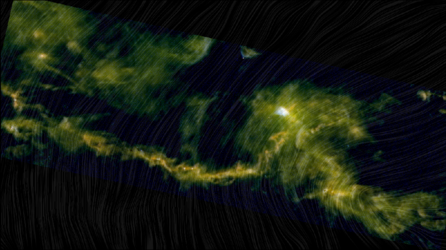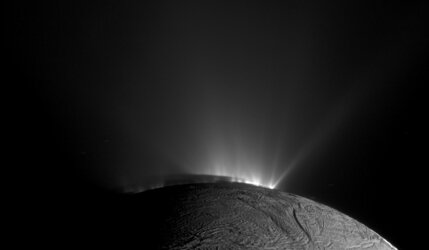Accept all cookies Accept only essential cookies See our Cookie Notice

About ESA
The European Space Agency (ESA) is Europe’s gateway to space. Its mission is to shape the development of Europe’s space capability and ensure that investment in space continues to deliver benefits to the citizens of Europe and the world.
Highlights
ESA - United space in Europe
This is ESA ESA facts Member States & Cooperating States Funding Director General Top management For Member State Delegations European vision European Space Policy ESA & EU Space Councils Responsibility & Sustainability Annual Report Calendar of meetings Corporate newsEstablishments & sites
ESA Headquarters ESA ESTEC ESA ESOC ESA ESRIN ESA EAC ESA ESAC Europe's Spaceport ESA ESEC ESA ECSAT Brussels Office Washington OfficeWorking with ESA
Business with ESA ESA Commercialisation Gateway Law at ESA Careers Cyber resilience at ESA IT at ESA Newsroom Partnerships Merchandising Licence Education Open Space Innovation Platform Integrity and Reporting Administrative Tribunal Health and SafetyMore about ESA
History ESA Historical Archives Exhibitions Publications Art & Culture ESA Merchandise Kids Diversity ESA Brand CentreLatest
Space in Member States
Find out more about space activities in our 23 Member States, and understand how ESA works together with their national agencies, institutions and organisations.
Science & Exploration
Exploring our Solar System and unlocking the secrets of the Universe
Go to topicAstronauts
Missions
Juice Euclid Webb Solar Orbiter BepiColombo Gaia ExoMars Cheops Exoplanet missions More missionsActivities
International Space Station Orion service module Gateway Concordia Caves & Pangaea BenefitsLatest
Space Safety
Protecting life and infrastructure on Earth and in orbit
Go to topicAsteroids
Asteroids and Planetary Defence Asteroid danger explained Flyeye telescope: asteroid detection Hera mission: asteroid deflection Near-Earth Object Coordination CentreSpace junk
About space debris Space debris by the numbers Space Environment Report In space refuelling, refurbishing and removingSafety from space
Clean Space ecodesign Zero Debris Technologies Space for Earth Supporting Sustainable DevelopmentApplications
Using space to benefit citizens and meet future challenges on Earth
Go to topicObserving the Earth
Observing the Earth Future EO Copernicus Meteorology Space for our climate Satellite missionsCommercialisation
ESA Commercialisation Gateway Open Space Innovation Platform Business Incubation ESA Space SolutionsLatest
Enabling & Support
Making space accessible and developing the technologies for the future
Go to topicBuilding missions
Space Engineering and Technology Test centre Laboratories Concurrent Design Facility Preparing for the future Shaping the Future Discovery and Preparation Advanced Concepts TeamSpace transportation
Space Transportation Ariane Vega Space Rider Future space transportation Boost! Europe's Spaceport Launches from Europe's Spaceport from 2012Latest

The Magellanic Clouds and an interstellar filament
Thank you for liking
You have already liked this page, you can only like it once!
Portrayed in this image from ESA’s Planck satellite are the two Magellanic Clouds, among the nearest companions of our Milky Way galaxy. The Large Magellanic Cloud, about 160 000 light-years away, is the large red and orange blob close to the centre of the image. The Small Magellanic Cloud, some 200 000 light-years from us, is the vaguely triangular-shaped object to the lower left.
At around ten and seven billion times the mass of our Sun, respectively, these are classed as dwarf galaxies. As a comparison, the Milky Way and another of its neighbours, the Andromeda galaxy, boast masses of a few hundred billion solar masses each.
The Magellanic Clouds are not visible from high northern latitudes and were introduced to European astronomy only at the turn of the 16th century. However, they were known long before by many civilisations in the southern hemisphere, as well as by Middle Eastern astronomers.
Planck detected the dust between the stars pervading the Magellanic Clouds while surveying the sky to study the cosmic microwave background – the most ancient light in the Universe – in unprecedented detail. In fact, Planck detected emission from virtually anything that shone between itself and the cosmic background at its sensitive frequencies.
These foreground contributions include many galaxies, near and far, as well as interstellar material in the Milky Way. Astronomers need to remove them in order to access the wealth of cosmic information contained in the ancient light. But, as a bonus, they can use the foreground observations to learn more about how stars form in galaxies, including our own.
Interstellar dust from the diffuse medium that permeates our Galaxy can be seen as the mixture of red, orange and yellow clouds in the upper part of this image, which belong to a large star-forming complex in the southern constellation, Chameleon.
In addition, a filament can also be seen stretching from the dense clouds of Chameleon, in the upper left, towards the opposite corner of the image.
Apparently located between the two Magellanic Clouds as viewed from Planck, this dusty filament is in fact much closer to us, only about 300 light-years away. The image shows how well this structure is aligned with the galaxy’s magnetic field, which is represented as the texture of the image and was estimated from Planck’s measurements.
By comparing the structure of the magnetic field and the distribution of interstellar dust in the Milky Way, scientists can study the relative distribution of interstellar clouds and the ambient magnetic field. While in the case of the filamentary cloud portrayed in this image, the structure is aligned with the direction of the magnetic field, in the denser clouds where stars form filaments tend to be perpendicular to the interstellar magnetic field.
The lower right part of the image is one of the faintest areas of the sky at Planck’s frequencies, with the blue hues indicating very low concentrations of cosmic dust. Similarly, the eddy-like structure of the texture is caused primarily by instrument noise rather than by actual features in the magnetic field.
The emission from dust is computed from a combination of Planck observations at 353, 545 and 857 GHz, whereas the direction of the magnetic field is based on Planck polarisation data at 353 GHz. The image spans about 40º.
-
CREDIT
ESA and the Planck Collaboration -
LICENCE
ESA Standard Licence

Lupus cloud complex viewed by Herschel and Planck

The Musca molecular clouds viewed by Herschel and Planck

Taurus Molecular Cloud viewed by Herschel and Planck

The magnetic field along the Galactic plane















 Germany
Germany
 Austria
Austria
 Belgium
Belgium
 Denmark
Denmark
 Spain
Spain
 Estonia
Estonia
 Finland
Finland
 France
France
 Greece
Greece
 Hungary
Hungary
 Ireland
Ireland
 Italy
Italy
 Luxembourg
Luxembourg
 Norway
Norway
 The Netherlands
The Netherlands
 Poland
Poland
 Portugal
Portugal
 Czechia
Czechia
 Romania
Romania
 United Kingdom
United Kingdom
 Slovenia
Slovenia
 Sweden
Sweden
 Switzerland
Switzerland
























